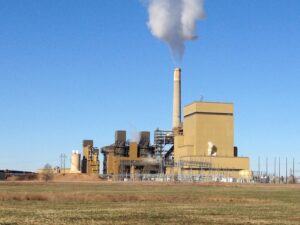A day after Japan’s Nuclear and Industrial Safety Agency (NISA) doubled estimates of the total amount of radiation released into the atmosphere after an earthquake and tsunami ravaged Tokyo Electric Power Co.’s (TEPCO’s) Fukushima Daiichi nuclear power plant, the government nuclear watchdog released a 750-page report in which it admits, for the first time, that nuclear fuel may have possibly melted through reactor pressure vessels and accumulated at the bottom of outer containment vessels.
The new report submitted to the International Atomic Energy Agency (IAEA) Ministerial Conference on Nuclear Safety outlines the status of the three most-afflicted reactors at Daiichi and the Japanese government’s efforts to quell the crisis.
Japanese newspaper The Yomiuri Shimbun on Tuesday pointed out that the report makes the first official recognition that a “melt-through” has occurred, saying that the possibility of a nuclear fuel leak from the reactor pressure vessel (RPV) into containment vessels is “far worse than a core meltdown and is the worst possibility in a nuclear accident.”
The report also acknowledges issues with the government’s administration of nuclear safety regulations, saying it was not clear who was in charge of keeping citizens safe in the event of a nuclear accident. It proposes making NISA a separate entity from the Economy Trade and Industry Ministry and urges reform of the Nuclear Safety Commission.
NISA said on Monday that it estimates the total amount of radiation released into the atmosphere in the first week of the crisis was 770,000 terabecquerels. That compares with NISA’s previous estimate, released April 12, of 370,000 terabecquerels for the first month of the crisis. However, the new figure was still only about 10% of the radiation released from the 1986 Chernobyl disaster, NISA said.
NISA Provides Timeline for Accident
According to the new comprehensive NISA report released on Tuesday, Units 1, 2, and 3 shut down at 2:46 p.m. JST on March 11, minutes after the 9.0-magnitude earthquake rocked northeast Japan. The six-reactor Daiichi plant lost all six external power supply sources because of the earthquake, and though this caused the emergency diesel power generators to start up, a subsequent 14-meter tsunami submerged and stopped all emergency diesel generators except one in Unit 6.
The air-cooled emergency generator continued operation in Unit 6. “In addition, since the seawater pumps were submerged by the tsunami, residual heat removal systems to release the residual heat inside the reactor to the seawater and the auxiliary cooling system to release the heat of many equipments to the seawater lost their functions,” the report says.
TEPCO workers scrambled to secure power supplies, but when they failed, TEPCO began efforts to cool the reactor cores without using AC power. These included operating the isolation condenser in Unit 1, operating the reactor core isolation cooling system (RCIC) in Unit 2, and operating the RCIC and high-pressure injection system in Unit 3. But these systems, too, “stopped functioning,” forcing the company to rely on “alternative injection of fresh water or sea water by the fire [extinguishing] line using fire engine pumps.”
Damage Worse Than Thought
NISA admitted that, as constant water injection to each reactor pressure vessel was impossible, “nuclear fuels in each reactor core were not covered by water but were exposed, and led to a core melt. A part of the melted fuel stayed at the bottom of the RPV,” it said.
At Unit 1, “there is a possibility that the bottom of the RPV is damaged as part of the melted fuel dropped and accumulated on the dry well floor (lower pedestal) of the [primary containment vessel (PCV)],” the report says.
TEPCO concluded from a provisional analysis dated May 15 that, after recalibrating water gauges at Unit 1 and realizing that water levels may have been lower than indicated, nuclear fuel pellets had melted, “falling to the bottom of the reactor pressure vessel at a relatively early stage after the tsunami reached the station." Melting started from the central part of the core, and 16 hours after the scram (around March 12, at 6:50 a.m. JST), "most of the core fell down to the RPV bottom," TEPCO says.
However, it added, because Unit 1 “has been cooled stably by water injection, we believe that there would not be likely the further situation transition, e.g. to the situation where we need to release a large amount of radioactive materials.” It adds in the analysis that "Although [the] RPV is damaged in this provisional analysis, the actual damage of [the] RPV is considered to be limited according to the temperatures presently measured around the RPV."
Only a few weeks earlier, TEPCO had said Daiichi’s reactor core was 70% damaged, but it then amended that figure to 55%. The company is conducting a similar provisional analysis for Units 2 and 3, where core damage is apparent, but to a lesser degree.
As The Yomiuri Shimbun noted on Tuesday, NISA concludes that Unit 1’s reactor core was thought to have been damaged just five hours after the earthquake—not 15 hours, as TEPCO contended earlier last month. Unit 2 was damaged 80 hours after the disaster, NISA also estimates, not 109 hours after, as TEPCO suggested.
Hydrogen Explosions Caused by Chemical Reactions and Leaked Gas
A reaction between the zirconium of the fuel cladding tubes and water vapor generated a large amount of hydrogen, and the gas and radioactive materials discharged into the PCV when TEPCO depressurized the RPVs (through wet well venting). The gas containing the hydrogen leaked and accumulated in the upper area of the reactor buildings and triggered hydrogen explosions at Units 1, 2, 3, and 4.
At Unit 4, where the reactor had been shut down for periodic inspection, the nuclear fuel had been transferred to a spent fuel pool. After the tsunami, both cooling and feed water functions were lost, forcing crews to spray water over the pool. On March 15, the reactor building exploded, blowing out the walls above the bottom of the operation floor.
Later, a fire broke out near the fourth floor of the reactor building. “With regard to the explosion in the reactor building, one may doubt the possibility of inflow of hydrogen from unit 3 as the exhaust pipe for venting the PCV joins the exhaust pipe from unit 4 before the exhaust stack,” NISA says. “However, the cause of [explosion] has not yet been identified.”
Sources: POWERnews, NISA, The Yomiuri Shimbun, TEPCO







